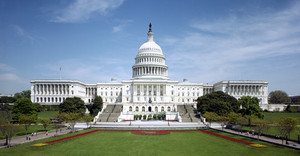India’s patent laws are being challenged by Big Pharma. Novartis is challenging India for denying the pharma giant a patent for Glivec (imatinib mesylate), its blockbuster cancer drug. While Bayer is challenging the Indian Government’s decision to grant a compulsory licence on its cancer drug Nexavar (sorafenib).
India’s patent laws coming under repeated challenges
Home/Policies & Legislation
|
Posted 14/09/2012
 0
Post your comment
0
Post your comment

Swiss-based Novartis already challenged India’s patent laws back in 2006 when it failed to receive patent protection for its blockbuster cancer medication Glivec (imatinib mesylate). According to Indian patent law, a patent cannot be granted for a modification of a known chemical composition and since imatinib mesylate was the salt form of imatinib, the original invention behind the cancer drug, it was not granted a patent. Novartis, however, argues that only by making it in salt form, which enabled the body to absorb the medicine 30% more easily, did Novartis have a proper drug.
In March 2012, India issued a compulsory licence to India-based generics firm Natco Pharma enabling them to produce generics of Germany-based Bayer’s cancer drug Nexavar (sorafenib), claiming the price made it unaffordable for many patients. Bayer, however, is arguing that the compulsory licence should be withdrawn because a generic version of Nexavar is already sold in India by Cipla–in breach of the patent–and therefore there is already a low-cost alternative available. Bayer’s appeal to the decision had its first hearing on 3 September 2012.
The hearing started in India’s Supreme Court on 11 September 2012 and the court has reportedly asked the company to instead slash the price of Glivec to Rs 5 in order to drive out competition. The judges continued by describing the current price of Rs 120,000 a month as shocking. Novartis has countered this suggestion by insisting that more than 95% of all Glivec patients in India receive their medicine free of charge through the Glivec International Patient Assistance Program.
These cases are just the latest in a number of contentious issues that have pitted Indian authorities against multinational pharmaceutical firms operating within the country. They are being highlighted as being landmark decisions by India, which could set future precedents and could influence how quickly India’s 1.2 billion people get new drugs, and at what price. According to 2011’s World Bank data, almost 68% of India’s citizens survive on less than US$2 per day, making the price of medicines an essential issue.
International humanitarian medical organisation Médecins Sans Frontières (MSF) has attacked both Bayer and Novartis, accusing them of restricting access to medicines for the poor. MSF has also said that the move by Novartis, if successful, ‘would have a devastating impact on access to essential medicines across the developing world’. MSF relies on affordable generics produced in India to carry out its work in 68 countries.
The flip side of this, however, is that without patent protection Big Pharma may become wary of entering the country with new drugs, denying India’s citizens access to the latest medical treatments. It’s a balancing act that the Indian government needs to address.
Other cases that have come before the Indian courts lately include Roche’s attempt to protect its lung cancer drug Tarceva (erlotinib). The Indian court upheld Roche’s patent for Tarceva, but said that Cipla’s generic version, Erlocip, did not infringe on Roche’s patent as the molecular structure of Cipla’s generic version is different to that of Roche’s drug.
Related articles
Bayer opposes sorafenib compulsory licence in India
Novartis versus the Indian patent system
Source: MSF, Novartis, The Economist, The Telegraph India
Guidelines
Canada poised to remove requirement for Phase III trials for biosimilars
European position paper on AI in medicinal product lifecycle
Most viewed articles
The best selling biotechnology drugs of 2008: the next biosimilars targets
Global biosimilars guideline development – EGA’s perspective
Related content
US EO: delivering Most-Favored-Nation Prescription Drug Pricing to American patients
Uruguay to establish independent AUVISA drug agency for healthcare reform
Malaysia announces Screening Package for new drugs and biologicals
Trump’s ‘One Big Beautiful Bill’: implications for US health care
US EO: delivering Most-Favored-Nation Prescription Drug Pricing to American patients

Home/Policies & Legislation Posted 03/10/2025
Uruguay to establish independent AUVISA drug agency for healthcare reform

Home/Policies & Legislation Posted 17/09/2025
Malaysia announces Screening Package for new drugs and biologicals

Home/Policies & Legislation Posted 25/08/2025
Trump’s ‘One Big Beautiful Bill’: implications for US health care

Home/Policies & Legislation Posted 14/08/2025
The best selling biotechnology drugs of 2008: the next biosimilars targets






Post your comment